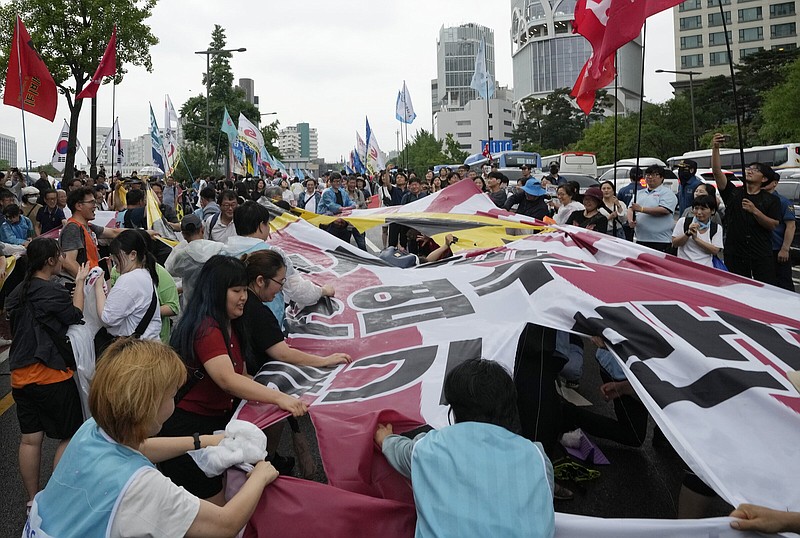FUTABA, Japan -- At Japan's tsunami-wrecked Fukushima Daiichi nuclear plant, giant blue pipes have been constructed to bring in torrents of seawater to dilute treated radioactive water under a plan to discharge it gradually into the Pacific Ocean. Workers were making final preparations as Associated Press journalists received a rare opportunity Friday to get a look at key equipment and facilities for the release, expected in coming weeks or months.
The International Atomic Energy Agency has looked at Japan's wastewater-release plan and said it would cause negligible radioactivity in the sea and no effect on neighboring countries, but the plans continue to draw strong protest and no starting date has been set.
Hong Kong announced Wednesday that it would ban seafood imports from 10 Japanese prefectures once the release begins, and Beijing has threatened possible new restrictions on the Chinese mainland.
The blue pipelines at the coastal plant are designed to dilute treated water with hundreds of times the volume of seawater in a primary pool. Later, the treated water from the tanks will be transported through a much thinner single pipeline after treatment, mixing and testing.
The diluted water will slowly be sent to a secondary pool before hitting a tunnel for a gradual, offshore release -- over the span of decades -- at an exit point 1,000 yards off the coast.
Workers are setting up a final water sampling station and testing two sets of equipment designed to shut down the system in emergencies -- all part of the operation permit granted to the plan by nuclear safety inspectors.
The government and the operator, Tokyo Electric Power Company Holdings, have struggled to manage the large amount of contaminated water coming from the reactors after they were damaged in a 2011 earthquake and tsunami. They say the plan to treat the water, dilute it with seawater and then release it into the Pacific Ocean will be much safer than national and international standards require.
Tokyo Electric Power official Tomohiko Mayuzumi said tritium, which government officials say is the only radionuclide inseparable from water, is being diluted to contain only one-fortieth of the national safety standard and one-seventh of its level allowed by the World Health Organization for drinking water.
"Our plan is scientific and safe, and it is most important to firmly convey that and gain understanding," Mayuzumi said.
Still, people have concerns and so a final decision on the timing of the release will be a "a political decision by the government," he said.
The March 11, 2011, earthquake and tsunami destroyed the Fukushima Daiichi plant's cooling systems, causing three reactors to melt and contaminating their cooling water, which has leaked continuously since then. The water is collected, treated with a filtering system and stored in about 1,000 tanks, which will reach their capacity in early 2024.
International Atomic Energy Agency Director General Rafael Mariano Grossi, who was in Japan earlier this month to submit his agency's report to Japanese Prime Minister Fumio Kishida and visit the plant, said the environmental and health impacts from the water release would be negligible under the plan.
Radioactivity in the water would be almost undetectable and the impact wouldn't cross national borders, he said, adding that the International Atomic Energy Agency has opened an office at the Fukushima plant to stay there through the entire process of the water release, which will take decades.
But some scientists say the environmental impact from long term, low-dose exposures are still unknown, and others are calling for more transparency and greater access for cross-checks.
In Tokyo, Economy and Industry Minister Yasutoshi Nishimura met with national fishing association officials Friday to seek understanding of the fishing communities, saying the water release is an unavoidable step for the plant's daunting task of decommissioning three melted reactors.
During the talks, National Federation of Fisheries Cooperative Associations chief Masanobu Sakamoto said their opposition is unchanged.
"We understand the scientific safety to a certain extent, but I believe scientific safety and sense of safety are different," Sakamoto told reporters after the meeting. "Safe and sustainable fishing with a sense of safety is our only hope. Unless we gain confidence about that, we will not ease our opposition."

